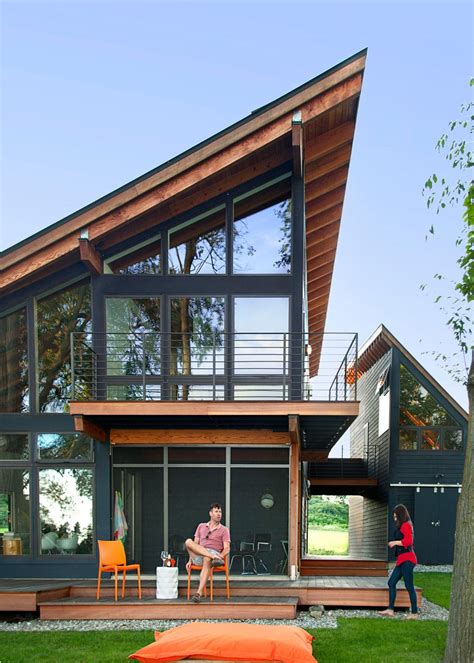Steep-roofed houses have been a staple of architecture for centuries, gracing landscapes with their distinctive silhouettes and enduring charm. From the towering peaks of Swiss chalets to the cozy abodes of New England colonials, steep roofs have added character and functionality to homes worldwide.

Historical Evolution of Steep Roofs
The origins of steep roofs can be traced back to ancient times, when primitive dwellings were constructed with sloping roofs to shed rainwater. Over time, these rudimentary roofs evolved into more elaborate designs, influenced by regional climate, cultural traditions, and the availability of building materials.
Gothic Revival: In the 19th century, the Gothic Revival architectural movement fueled a renewed interest in steep roofs. Inspired by medieval cathedrals, Victorian homes featured steeply pitched roofs adorned with intricate gables, turrets, and dormers.
American Colonial: Steep roofs were also a defining characteristic of American colonial architecture. The gable roofs of New England homes provided ample attic space for storage and additional living areas.
Benefits of Steep Roofs
Beyond their aesthetic appeal, steep roofs offer several practical advantages:
- Efficient Water Drainage: The steep slope of the roof allows water to shed quickly, preventing leaks and damage to the structure.
- Increased Attic Storage: The triangular space formed by the roof pitch can be utilized as attic storage, providing extra space for belongings or converting it into habitable rooms.
- Improved Ventilation: The high ceilings and air circulation under a steep roof promote ventilation, reducing the risk of moisture buildup and mold growth.
Disadvantages of Steep Roofs
While steep roofs offer numerous benefits, there are also some potential drawbacks:
- Higher Construction Costs: The complex geometry of steep roofs requires more materials and labor, resulting in higher construction costs compared to flat or low-pitched roofs.
- Maintenance Challenges: Steep roofs can be more difficult and expensive to repair or replace due to their height and inaccessibility.
- Snow Accumulation: In snowy climates, steep roofs can accumulate a significant amount of snow, which can pose a structural hazard and require frequent clearing.
Design Considerations for Steep Roofs
When designing a steep-roofed house, several factors should be taken into account:
- Roofing Material: The type of roofing material used should be suitable for the steep slope and local climate. Asphalt shingles, metal roofing, and slate are common options.
- Pitch: The angle of the roof pitch should be appropriate for the region’s rainfall patterns and wind loads.
- Structural Support: The roof structure must be strong enough to withstand the weight of the roofing materials and potential snow loads.
- Aesthetic Considerations: The design of the roof should complement the architectural style of the house and enhance its overall appearance.
Modern Applications of Steep Roofs
While steep roofs have traditionally been associated with historic architecture, they are still used in modern construction for their aesthetic value and practical advantages.
- Contemporary Architecture: Architects are incorporating steep roofs into contemporary designs to create dramatic silhouettes and striking visual statements.
- Energy Efficiency: Steep roofs can be combined with solar panels or skylights to maximize natural light and reduce energy consumption.
- Green Roofs: The sloped surfaces of steep roofs can be utilized for green roofs, which provide environmental benefits such as stormwater management and reduced heat absorption.
Conclusion
Steep roofs have stood the test of time, adding beauty, character, and functionality to homes worldwide. While they may not be suitable for every architectural style or budget, their enduring appeal lies in their ability to create distinctive and charming structures that meet both aesthetic and practical needs.
Frequently Asked Questions
1. What is the minimum roof pitch for a steep roof?
A roof is typically considered steep if it has a pitch of 30 degrees or more.
2. What roofing materials are best suited for steep roofs?
Metal roofing, slate, and asphalt shingles are popular choices for steep roofs due to their durability and ability to withstand high wind speeds.
3. How can I improve ventilation in a steep-roofed house?
Install gable vents, ridge vents, or soffit vents to promote air circulation and reduce moisture buildup.
4. How much does it cost to build a steep roof?
The cost of building a steep roof can vary widely depending on factors such as the size of the roof, the roofing material used, and the complexity of the design.
